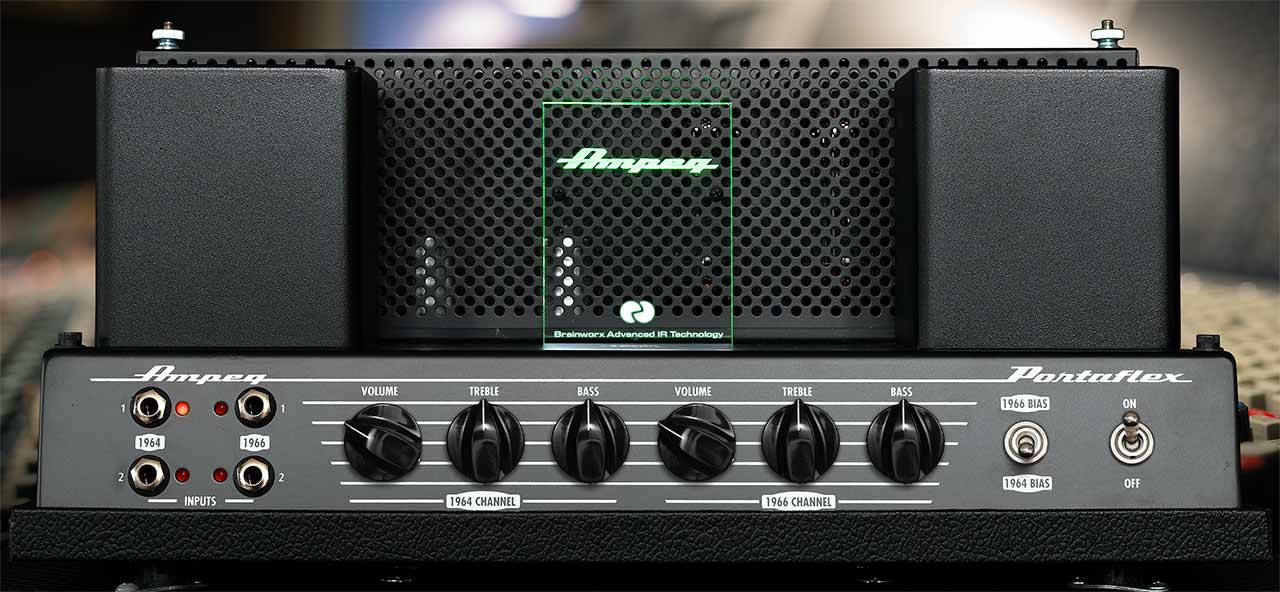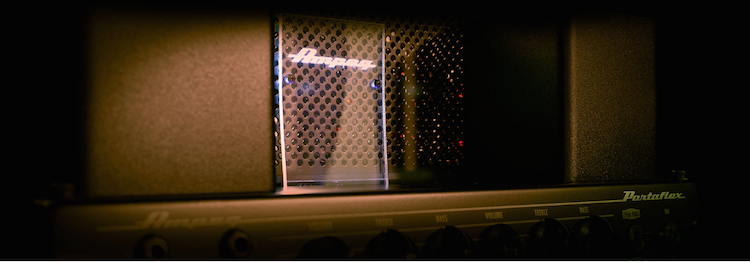New Software Review: UAD Ampeg B-15N

Gain access to instant vintage bass mojo with the UAD Ampeg B-15N emulation—a faithful re-creation of the revered studio classic.
Many musicians and engineers crave the sounds of classic vintage hardware, but don’t have access to the real thing.
You can rage all day against the dying of the light, but emulations are here to stay, and many of them have gotten quite good.
Not all of us have access to drive a real tube bass amp like it needs to be driven to get “that sound,” and emulations can be a real life-saver there. Original vintage models can be wonderful yes, but can be hard to source for every project, and sometimes, will be in “falling apart” condition when you do find one selling for a reasonable price.
To help with this, Universal Audio, a company well-known for their emulations of classic audio gear, released the UAD Ampeg B-15N plugin late last year, modeled after the beloved combo bass amp that bears the same name.
This is a digital re-creation of one of the most revered amps of yesteryear. An interesting beast, the original had 6 tubes and a closed-back cabinet with one 15” speaker. First introduced as the B-15 Portaflex in 1960, it became the go-to model for many bassists.
This amp was used on countless Motown and Stax records, and helped create the iconic sound that many still strive to achieve today. As always with hardware, later models had different attributes such as wattage, tube type, and tube bias, and Brainworx has made efforts to model the tone of more than one version of the classic B-15 with this release. Let’s take a closer look.
Features
The UAD Ampeg B-15N has two channels available, one of which is modeled after the 1964 version, and the other after the 1966 model. Both channels offer two inputs. Input 1 is at 0 dB, while input 2 is at -15 dB (useful for modern instruments with higher output levels). Each channel offers an independent High and Low Baxandall EQ, as well as volume.
It should be noted that the EQs are not identical and offer different amounts of boost and cut. An interesting feature is the ability to use different bias levels regardless of channel. In other words, it is easy to use the 1966 tube bias with the 1964 amp model.
Bias, in very simplified terms, is the operating voltage applied to the tubes. This can always be adjusted on the real amp as well, but that requires opening it up. Doing this can also be dangerous so I wouldn’t recommend it unless you absolutely know what you are doing. Luckily the UAD model makes this easy (and far less potentially deadly) and these kinds of tonal options are a tweaker’s dream.
The original B-15N is a simple and straightforward amplifier, but the UAD version adds some features which enhance flexibility as part of an FX rack. First up is a noise gate with adjustable range and threshold. Older tube amps can be noisy, and this limited range gate can help manage that noise. It’s easy to dial in subtle noise reduction or extreme gating. Also included is a high-pass and low-pass filter, labeled “Tight” and “Smooth,” respectively. Each filter can be set pre- or post-amplifier, which is a nice touch.
Up next are the input gain and power soak features. People love tube amps (unless they have to move them) for many reasons. One of those is the ability to go from clean and pristine to nasty and fuzzy, based on how hard the tubes are driven. Tube amps are extremely responsive to incoming level, and the Input control on the B-15N makes it easy to hit the amp with more level. This is particularly useful if you have a low output instrument like many vintage basses.
Another feature of tube amps is that cranking them up can give you glorious amounts of thick distortion. But how many of us apartment dwellers can drive a huge amp like the B-15N to full volume? Or if using the emulation, how can we crank the volume without clipping into the DAW? The power soak feature helps by allowing us to drive the tubes harder without driving the volume up. In other words, high volume tone, at lower output levels.
Last we have a set of recording chains curated by Dirk Ulrich of Brainworx to further tweak the sound—42 separate cabinet and mic combinations, to be precise. The ability to use many cabinets with any number of dynamic, ribbon, or condenser mics here is nice. You can even turn the horn on and off. If none of these chains work for you, there is also the option of “Empty Play Real Cab” which mimics the sound of the amp being run directly into a console.
One final thing to note is the B-15N’s use of UA’s Unison technology. Many manufacturers offer gear emulations these days, and some of them have gotten pretty good at mimicking the tone/color/distortion characteristics of a device. But we don’t live in a vacuum. Instruments and microphones interact with their amplifier counterparts. Unison technology matches the input impedance of the original device, ensuring that the system of a particular bass/amp or mic/preamp combo behave as they would in the real world. If Unison technology is new to you, find out more about it here.
In Use
The UAD Ampeg B-15N is a joy to use. Thinking Motown, I grabbed my bass (with flatwounds, natch) and plugged into my Apollo Quad Interface. I’m not a bassist by trade, but it was easy and intuitive to navigate the amp and settings. In a tracking scenario, auditioning tones while the bassist gets comfortable is smooth and fast.
The extra features not found on the actual amp make your life easy. The noise gate works well, but as always when tracking with dynamics, it’s important to use caution. Too extreme of a setting can destroy the natural sound and sustain of the instrument.

One of the many benefits of UAD’s emulation of the B-15N is the ability to explore various types of mic/cabinet combinations, many of which are offered as presets from Brainworx’s Dirk Ulrich.
By nature, fitting vintage tones into modern productions can be difficult. Common levels of noise and dynamic range were different in the past than they are today. The FX rack here can help give you the best of both worlds. As with all Brainworx plugins, you can save and audition four separate settings with the B-15N. Copying and pasting is also available, along with 32 levels of undo.
There is also a useful feature which cycles through these models at a selected rate. More listening and less mousing is always preferable. I love this feature and wish it were available on more UAD plugins.
To Be Critical
Brainworx’s choice to use the words “Tight” and “Smooth” for the EQ filters on the B-15N seems odd to me—it feels counter-intuitive to label a feature with such colorful terms. Why not just call it what it is, and aid in the education for the next generation of engineers? Despite the naming convention, I did find this feature to be useful for dialing in tones.
Other than that, there is nothing to be critical of on this emulation. It’s an inexpensive way to obtain “that sound” consistently and in any environment.
Summing it Up
The original Ampeg B-15N is not what I would ever refer to as a versatile amp. But to be honest, versatility is not really what I’m looking for in an amp. I want character… lots of character. And if a given amp is not working for the song at hand, then a different amp is what is needed.
However, by offering multiple versions of the cabinet in the emulation, along with additional parameters, and the many mic combinations, Brainworx has greatly extended the tonal possibilities of the original B-15N, no longer rendering it a one-trick pony. At an asking price of $149, the UAD Ampeg B-15N is not every color in the spectrum, but the shading and texture options are deep and wide.
Please note: When you buy products through links on this page, we may earn an affiliate commission.






